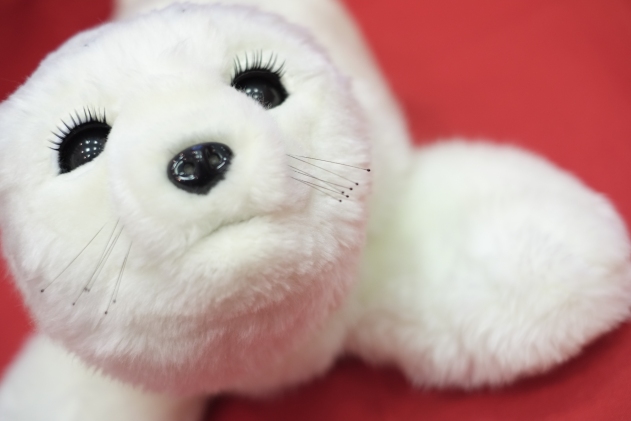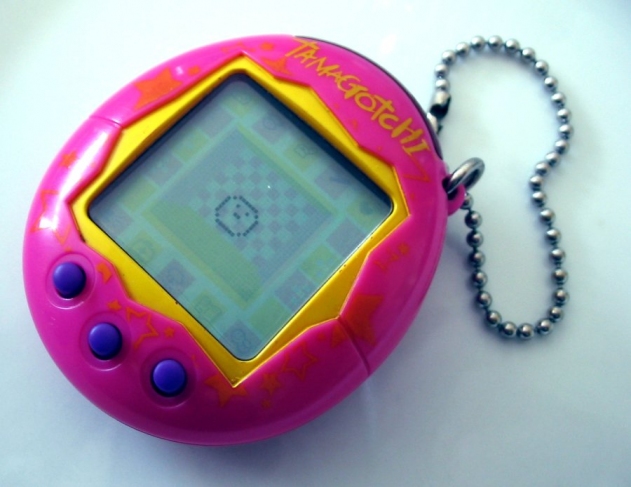
One of the main features of the robotic technology in Spike Jonze’s HER, from 2013, is that it is physically featureless. Samantha (voiced by Scarlett Johansson) is an operating system that has no physical form. The film centers on her user, Theodore (Joaquin Phoenix), and the impact that Samantha has on his life. Despite her formlessness, Theodore develops an intimate relationship with her. The Museum of Modern Art is screening HER as part of its 2017 summer series called “Future Imperfect: The Uncanny in Science Fiction.” Before the screening, Science & Film spoke with Dr. Selma Sabanovic from Indiana University’s School of Informatics and Computing about social robots.
Science & Film: What are some uses for social robots?
Selma Sabanovic: Social robots are designed to be used in many different contexts where people engage in social interaction: homes, hospitals, schools, even workplaces. They can have different roles there: as companions, collaborators, information, service providers, and assistants. We do research with a commercial robot that is meant to be used for health care called Paro. It is a robot in the shape of a seal. It was designed in Japan but is commercially available in the US. It responds to touch, it opens and closes its eyes, and it makes cooing sounds. If you give it to people, even without instruction, they start interacting with it and figure out its features through the feedback Paro gives.
S&F: Is the seal supposed to be comforting?
SS: It is designed to be used as a substitute for pet therapy. Have you heard of that?
S&F: I have–with cats.
SS: The idea is that if you interact an animal and it is responding, then your stress level goes down and your mood can improve over time. Paro was designed to see if a robot with some of these animal-like responses could affect people in a similar kind of way.

S&F: That sounds like a different sort of relationship than in HER, where the relationship between Theodore and Samantha grows over time.
SS: Even though the seal robot is really simple as compared to Samantha in the movie, you do see some people develop a kind of relationship with the robot. Paro is often used in nursing homes. More than a decade ago, I worked with the Japanese group, led by Dr. Shibata Takanori, that developed them. I used to go with them into nursing homes, and we noticed that people would individualize their seals. They gave each one a different name and they could tell them apart; they would bond with a particular one. Even with simplest interaction there is the possibility for developing a relationship. This says something about people and their desire to relate socially to others, even to artifacts.
S&F: You can see that with children and stuffed animals. But, HER posits a more detrimental relationship in the end because Theodore becomes emotionally dependent and ends up feeling betrayed.
SS: The people who interact with the seal are aware that it’s a robot. But some still act like it has emotions. Did you have a Furby?
S&F: I didn’t. But I did have a Tamagotchi, which was a keychain with a pixilated display of a creature that required care and so I carried it around with me.

SS: Designers of these early social robots also made them seem infantile. This was partly to inspire nurturing, and partly to deal with the expectation that people have when they think that a robot is older, maybe an adult, and therefore knows things.
S&F: What are some potential drawbacks to these relationships?
SS: That people might be duped into thinking there is a [two-way] relationship when there isn’t one. A lot of these technologies are designed for older adults or people who are vulnerable in other ways; sometimes it is children with autism. There is a concern that the robots are fulfilling a particular kind of social role and need and so the people will be left alone with them. Sherry Turkle, an MIT researcher, has called this the “crisis of authenticity.” Sometimes these technologies can seem better than people because they’re easier to deal with or are more readily available. But it’s not a real relationship.
Robert Sparrow, a philosopher at Monash University in Australia, has talked about the fact that robots can make people happy, but then asks–is happiness the most important value we need to strive for? Aren’t there other things, like human dignity? Is happiness enough?
This drawback didn’t come out too much in HER, but people also think about the fact that these technologies can collect a lot of data. If you put them in people’s homes, or you give a child a robotic toy, it can talk but possibly also record the child. Who gets that information and what do people do with it? What happens if the technology responds in a certain way to try to get you to buy a certain thing, or act a certain way? There are a lot of concerns.
S&F: And what about these relationships conditioning behaviors? Sometimes I see kids interact with something like a book, and expect it to be responsive.
SS: And then they get bored of it when it doesn’t respond. People worry about users learning behaviors from robots that are inappropriate for living things, such as hitting a robot dog. There are also robots that are being designed as sex robots. Are they an appropriate technology for people to create and have? Are there appropriate and inappropriate ways of behaving toward such technologies? On the one hand, they might be beneficial because people can do things they’d like to do but can’t do with people. But maybe there are things that are not appropriate for someone to do ever, even with something that looks like a person but isn’t. Robots could reproduce, spread, and normalize human stereotypes and behaviors that are socially undesirable.
Dr. Selma Sabanovic is an associate professor of informatics and cognitive science at Indiana University. She is founder and director of the University’s R-House Laboratory for Human-Robot Interaction. The lab brings together researchers from the social sciences and technology fields in order to study and design assistive robotic technologies.
HER, written and directed by Spike Jonze, will be projected in 35mm on August 20 and 23 at the Museum of Modern Art.